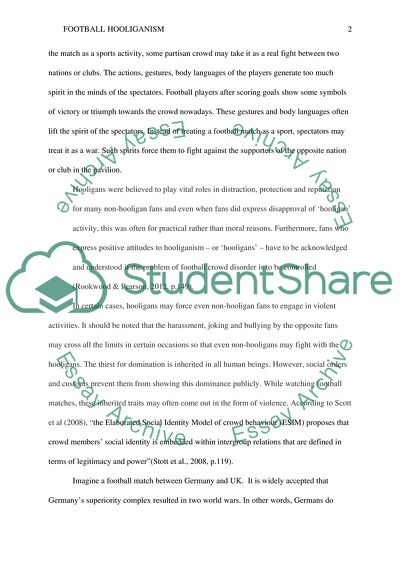Cite this document
(“Tackling Football Hooliganism: A Quantitative Study of Public Order, Research Paper”, n.d.)
Tackling Football Hooliganism: A Quantitative Study of Public Order, Research Paper. Retrieved from https://studentshare.org/psychology/1598753-tackling-football-hooliganism-a-quantitative-study-of-public-order-policing-and-crowd-psychology
Tackling Football Hooliganism: A Quantitative Study of Public Order, Research Paper. Retrieved from https://studentshare.org/psychology/1598753-tackling-football-hooliganism-a-quantitative-study-of-public-order-policing-and-crowd-psychology
(Tackling Football Hooliganism: A Quantitative Study of Public Order, Research Paper)
Tackling Football Hooliganism: A Quantitative Study of Public Order, Research Paper. https://studentshare.org/psychology/1598753-tackling-football-hooliganism-a-quantitative-study-of-public-order-policing-and-crowd-psychology.
Tackling Football Hooliganism: A Quantitative Study of Public Order, Research Paper. https://studentshare.org/psychology/1598753-tackling-football-hooliganism-a-quantitative-study-of-public-order-policing-and-crowd-psychology.
“Tackling Football Hooliganism: A Quantitative Study of Public Order, Research Paper”, n.d. https://studentshare.org/psychology/1598753-tackling-football-hooliganism-a-quantitative-study-of-public-order-policing-and-crowd-psychology.


